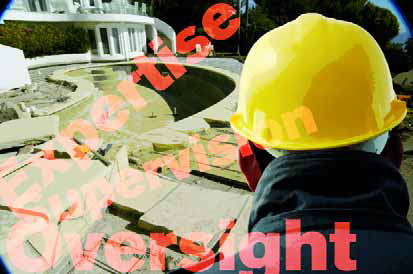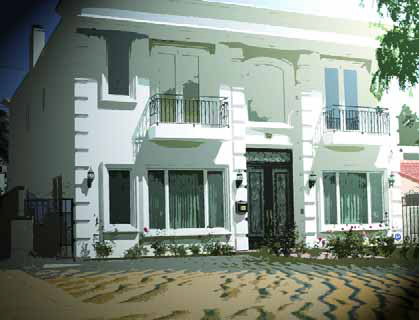ARTICLES
Advance Search
Aquatic Health
Aquatic Health, Fitness & Safety
Around the Internet
Aquatic Culture
Aquatic Technology
Artful Endeavors
Celebrity Corner
Life Aquatic
Must-See Watershapes
People with Cameras
Watershapes in the Headlines
Art/Architectural History
Book & Media Reviews
Commentaries, Interviews & Profiles
Concrete Science
Environment
Fountains
Geotechnical
Join the Dialogue
Landscape, Plants, Hardscape & Decks
Lighter Side
Ripples
Test Your Knowledge
The Aquatic Quiz
Other Waterfeatures (from birdbaths to lakes)
Outdoor Living, Fire Features, Amenities & Lighting
Plants
Ponds, Streams & Waterfalls
Pools & Spas
Professional Watershaping
Structures (Editor's Notes)
Travelogues & History
Water Chemistry
WaterShapes TV
WaterShapes World Blog
Web Links
Around the Internet
Aquatic Culture
Aquatic Technology
Artful Endeavors
Celebrity Corner
Life Aquatic
Must-See Watershapes
People with Cameras
Watershapes in the Headlines
In the last several of these "Details," I've covered what happens in my projects before construction begins. Now we're ready to shift gears and look at what happens on site - the place where design and execution meet. Before we look at the way I build things, however, I want to take a hard look at common practices in the field. What I write here may seem harsh, but it's not intended that way: To establish a baseline for doing things in what I would term the right way, I need to point to practices in our industry - particularly the pool/spa sector - that
Recently, much has been written and discussed in our local Los Angeles media - newspapers, magazines, television - about an influx of architectural styles to our area that "just don't fit in" and are generally thought of as being a blight on our collective landscape. This isn't anything new, of course. I recall similar dustups in the 1970s and '80s when the stylistic serenity of old, established neighborhoods was being disrupted by the insertion
Recently, much has been written and discussed in our local Los Angeles media - newspapers, magazines, television - about an influx of architectural styles to our area that "just don't fit in" and are generally thought of as being a blight on our collective landscape. This isn't anything new, of course. I recall similar dustups in the 1970s and '80s when the stylistic serenity of old, established neighborhoods was being disrupted by the insertion
We knew it had to happen. After several years of superheated growth, some sectors of the watershaping market are now slowing down - in some areas, dramatically so. In my travels and through dozens of conversations with watershapers and their suppliers during the past several months, I've been hearing consistently that the volume-oriented, price-driven end of the market has been hit particularly hard - off somewhere between 30 and 60 percent in some areas. That's a big number no matter which end of the spectrum is closer to the truth. It represents an enormous change from the extreme demand that most all of us were experiencing just a year ago. So now, a great many firms that were
We knew it had to happen. After several years of superheated growth, some sectors of the watershaping market are now slowing down - in some areas, dramatically so. In my travels and through dozens of conversations with watershapers and their suppliers during the past several months, I've been hearing consistently that the volume-oriented, price-driven end of the market has been hit particularly hard - off somewhere between 30 and 60 percent in some areas. That's a big number no matter which end of the spectrum is closer to the truth. It represents an enormous change from the extreme demand that most all of us were experiencing just a year ago. So now, a great many firms that were
Back on March 17, the World Wildlife Fund released a report on the profound level of environmental damage that's been done to some of the world's most iconic rivers. The news about the Nile, Danube, Yangtze, Ganges, La Plata and Rio Grande rivers is indeed grim: All are so severely polluted that they're in immediate danger of
Back on March 17, the World Wildlife Fund released a report on the profound level of environmental damage that's been done to some of the world's most iconic rivers. The news about the Nile, Danube, Yangtze, Ganges, La Plata and Rio Grande rivers is indeed grim: All are so severely polluted that they're in immediate danger of
To me, designing and building ponds and streams is the best job in the world: It offers the professional rare opportunities to shape beautiful compositions that mimic nature and bring joy to those who spend time near the water's edge. It's hard work both physically and mentally, but ultimately, it's profoundly satisfying. I backed into this business while doing lawn and landscape maintenance work during high school. What I observed on that end of the market was a level of competition so intense that I soon recognized I'd need a specialty if I were to have any chance of pursuing a good career at it. In surveying the market, I noted that a number of landscaping firms were getting into naturalistic waterfeatures - and that the outcomes frequently looked terrible, even from my novice's perspective. To get in and out quickly, too many of these operators created systems that bore no resemblance to nature at all: From the rockwork to the way streams cut through spaces, what I saw just didn't square with what I'd seen in the real world. These shortcomings spelled opportunity, of course, but I also knew that to stand apart from the rest, I'd need to develop my own skills and deliver work that reached a much higher level than just about
To me, designing and building ponds and streams is the best job in the world: It offers the professional rare opportunities to shape beautiful compositions that mimic nature and bring joy to those who spend time near the water's edge. It's hard work both physically and mentally, but ultimately, it's profoundly satisfying. I backed into this business while doing lawn and landscape maintenance work during high school. What I observed on that end of the market was a level of competition so intense that I soon recognized I'd need a specialty if I were to have any chance of pursuing a good career at it. In surveying the market, I noted that a number of landscaping firms were getting into naturalistic waterfeatures - and that the outcomes frequently looked terrible, even from my novice's perspective. To get in and out quickly, too many of these operators created systems that bore no resemblance to nature at all: From the rockwork to the way streams cut through spaces, what I saw just didn't square with what I'd seen in the real world. These shortcomings spelled opportunity, of course, but I also knew that to stand apart from the rest, I'd need to develop my own skills and deliver work that reached a much higher level than just about
I've seen many changes in the 38 years I've been installing vinyl-liner pools. When I started out, we worked mostly with wooden walls, and I even recall some made with asbestos. We always did our best, but I'll concede that in those early days the construction techniques were relatively unsophisticated. These days, we at The Pool & Spa Doctor (Wall, N.J.) work mostly with galvanized-steel construction and, in a smaller percentage of projects, with either modular polymer or fiberglass systems. We've been at it long enough in our market that, through the years, we've gone in and replaced many of the old wooden walls with modern modular systems - an experience that always drives home for us the fact that the


















